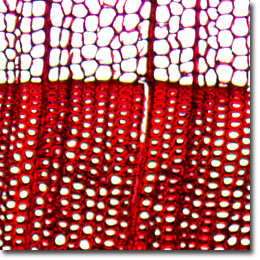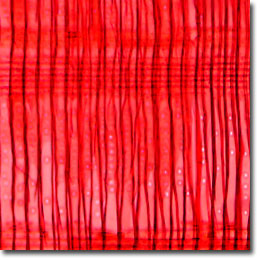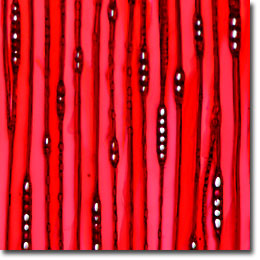The Western Hemlock
The Western Hemlock (Tsuga heterophylla; also known as the West Coast Hemlock) is a softwood tree found primarily on the Pacific Coast from Alaska south to western Canada and into central California. Some trees grow as far east as Idaho and Montana. This tree is one of Canada's most valuable timbers. Western hemlock wood is white to light yellow-brown in color, with the late-wood portion of the ring frequently displaying a roseate, purple, or red-brown tinge. The heartwood is not distinct, but the last few rings near the bark are almost white.

Cross Section

Radial Section

Tangential Section
A member of the pine family (Pinaceae), hemlocks are beautiful evergreen trees that have about 10 individual species. These trees are excellent screen and background plants and have a delicate foliage with numerous fan-like leafs. Hemlocks do not grow well in dry summer air, in dry or alkaline soils, or in areas that receive a significant amount of wind. They should be planted in eastern exposures, generously mulched, and irrigated regularly.
Western Hemlock wood is used for paneling, boxes, crates (generally the type requiring rather thick boards because of the woods' tendency to split upon nailing), railroad car construction, general construction, and mill products. The wood was formerly used for sugar and flour barrels (because of freedom from resinous materials, the absence of taste, and its clear color), and for ladder rails.
Microscopic examination of iron-alum hematoxylin and safranin stained thin sections (see the digital images presented above) reveals a more gradual transition from spring to summer wood than is observed in other species of this group. The rings are generally narrow and even with occasional longitudinal strands of resin cells. Tracheids average 30 to 40 micrometers in diameter, and bordered pits occur in one to two rows on the radial walls. Longitudinal parenchyma is very sparse or lacking, and the rays are uniseriate or rarely paired.